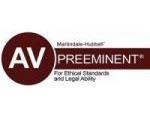Causes of Pedestrian accidents in Tampa can be for any reason and happen anywhere pedestrians and drivers share space. Tampa is home to many attractions where pedestrian traffic is heavy, such as the zoo, Florida Aquarium, Riverwalk, Busch Gardens, and beautiful nearby beaches. But a fun day can turn into a disaster if a negligent driver strikes someone on foot. Intersections, crosswalks, and parking lots are all common sites of pedestrian accidents.
According to the Centers for Disease Control and Prevention (CDC), pedestrians are 1.5 times more likely than motorists to be killed in a crash. Along with cuts and bruises, victims may suffer catastrophic injuries that can cause lifelong injuries and require costly long-term care.
If you or a loved one was hurt in a pedestrian accident in Central Florida, seeking compensation can be a stressful process. Let the skilled Pedestrian accident lawyers in Tampa at Brooks Law Group lift the burden from your shoulders. We will work tirelessly to protect your rights by building a strong pedestrian accident claim that accounts for the full extent of your losses.
Call or contact us now for a free consultation.
Common Causes of Pedestrian Accidents
A motorist’s negligence causes the vast majority of pedestrian accidents. Common causes of these collisions include:
Distracted Driving
When drivers talk on the phone, text, eat, or engage in any activity that takes their attention off driving, they put pedestrians at risk.
Poor Visibility
Many Florida pedestrian accidents occur at night, at dawn, or dusk. That’s because visibility is low during those periods. Bad weather or poor lighting can also make it more difficult for drivers to see pedestrians in their paths. Regardless, drivers should exercise particular care in areas of reduced visibility to avoid pedestrian collisions. Failure to do so can have tragic consequences.
Speeding
Speeding drivers have less time to react when a pedestrian crosses their path. Even if the pedestrian acted negligently or recklessly, the motorist may be held liable or partially liable if they traveled over the posted speed limit.
Intoxication
Drivers who operate their vehicles under the influence of drugs, alcohol, or prescription medications are hazardous to pedestrians. An impaired driver may drive through crosswalks, ignore traffic signals, or drive off the road onto the sidewalk, putting many pedestrians in danger at once.
Keep in mind that intoxication on the pedestrian’s part is also a contributing factor in many pedestrian crashes. Florida law grants certain legal rights to both pedestrians and drivers. This means pedestrians can be partly to blame for an accident if they violate traffic laws.
Vehicles Turning Left
Pedestrians are particularly vulnerable to vehicles making left turns. Drivers making left turns need to watch for oncoming traffic to time their turns correctly. When their attention is more focused on spotting other vehicles, they may miss pedestrians who are rightfully crossing the road.
Failure To Yield
Pedestrians have the right of way in specific traffic scenarios. For example, drivers must stop and yield to pedestrians when a light is red. Nearly all failure-to-yield accidents are the motorist’s fault.
Traffic Blocking View
Trucks and buses often sit in the right-most lanes near crosswalks when unloading goods and passengers. While the stop is necessary, these large vehicles can block the view of other drivers. A pedestrian could step out into the road and get struck before the motorist has time to react.
Pedestrian Safety Tips
Consider the following pedestrian safety tips if you’re out and about in Tampa:
- Don’t assume a driver sees you. Make eye contact with motorists as they approach to make sure you are spotted.
- Wear colors that increase your visibility. Many of the most catastrophic pedestrian accidents happen because the motorist never saw the person before the crash.
- Use sidewalks. Sidewalks are the safest place to walk as a pedestrian. If there is no sidewalk available, it’s generally safer to walk while facing traffic and as far left as you can. Use extreme caution when walking near a road without a sidewalk. Stay off freeways and roads that do not allow pedestrians.
- Move predictably. Try to keep your walking and movements predictable. For example, don’t walk erratically from one side of the road to the other.
- Be aware of blind spots. All vehicles have blind spots that can prevent motorists from seeing others. Try to keep out of those blind spots if possible. Be careful of the large blind spots, or “no-zones,” that trucks, buses, and other large commercial vehicles have. Assume the driver does not see you. Never walk behind a car while it is backing up because the driver cannot see directly behind them.
- Don’t drink and drive. Alcohol impairs your ability to make sound decisions. Just as motorists should never operate a vehicle under the influence of alcohol, pedestrians should never drink before walking near high-traffic areas.
- Take off the headphones. Listening to music, an audiobook, or a podcast while you are walking can be dangerous. Make sure the volume is low enough that you can still keep a safe level of awareness about your surroundings. You want to be able to hear approaching cars.
- Put your phone away. Looking at your smartphone could leave you open to hazards on the roadways. Like distracted driving, distracted walking is also very dangerous. It’s in your best interest to put your smartphone away and pay attention when walking.
- Watch for wide loads. Trucks with wide loads make wide turns, need more space, and take longer to stop than other vehicles on the road. Keep your distance when walking near tractor-trailers and buses.
Contact a Tampa Pedestrian Injury Lawyer Today
If you have been seriously harmed in a pedestrian accident, you need legal help now. Get experience and dedication on your side by contacting Brooks Law Group.
At Brooks Law Group, we put people first. Our Tampa pedestrian accident lawyers will listen to your story and develop a solid legal strategy to pursue maximum compensation on your behalf. Then we’ll work aggressively for the best possible outcome for your case.
We can get started today. Just call or contact us for a free, no-obligation consultation.












